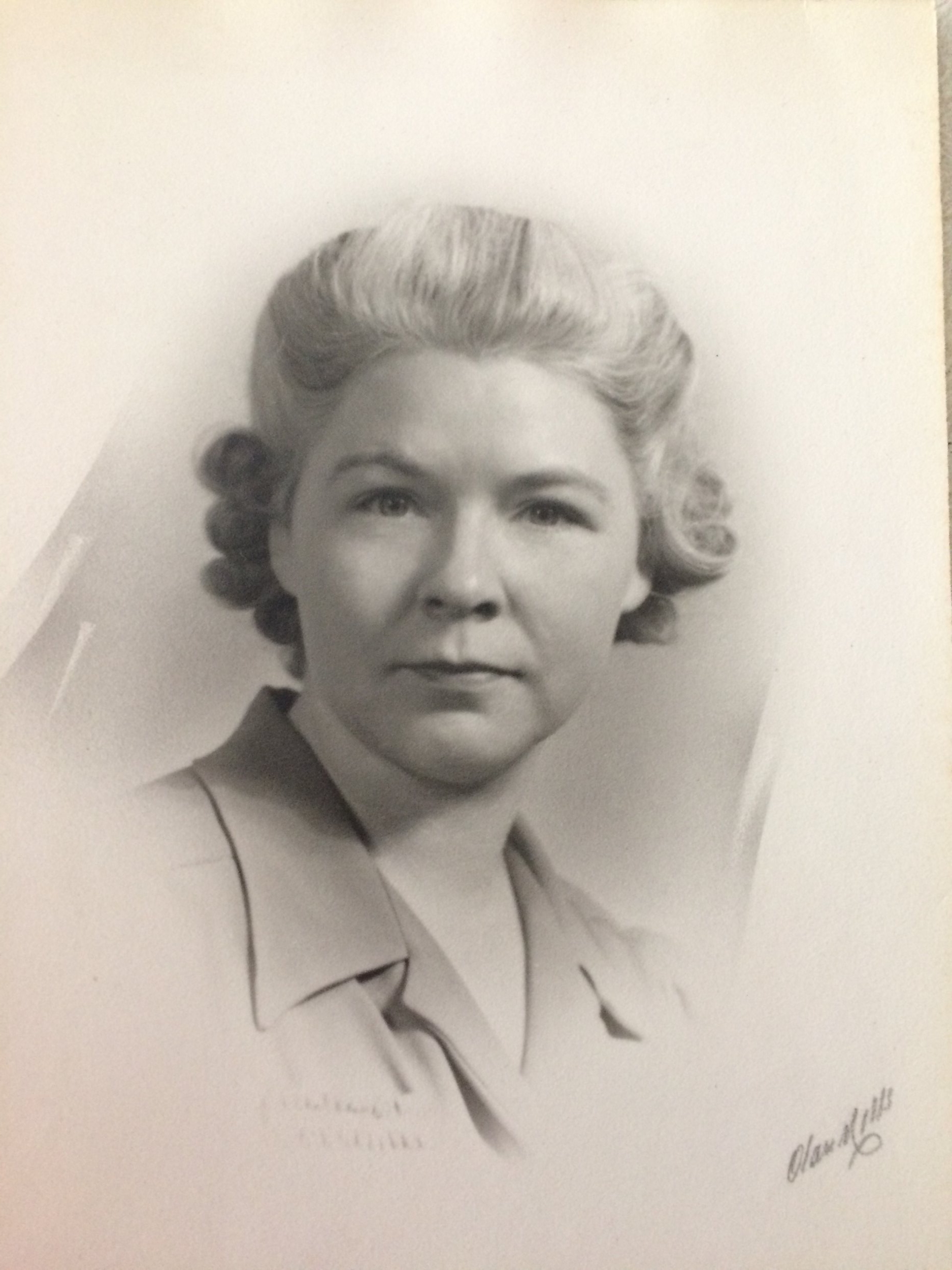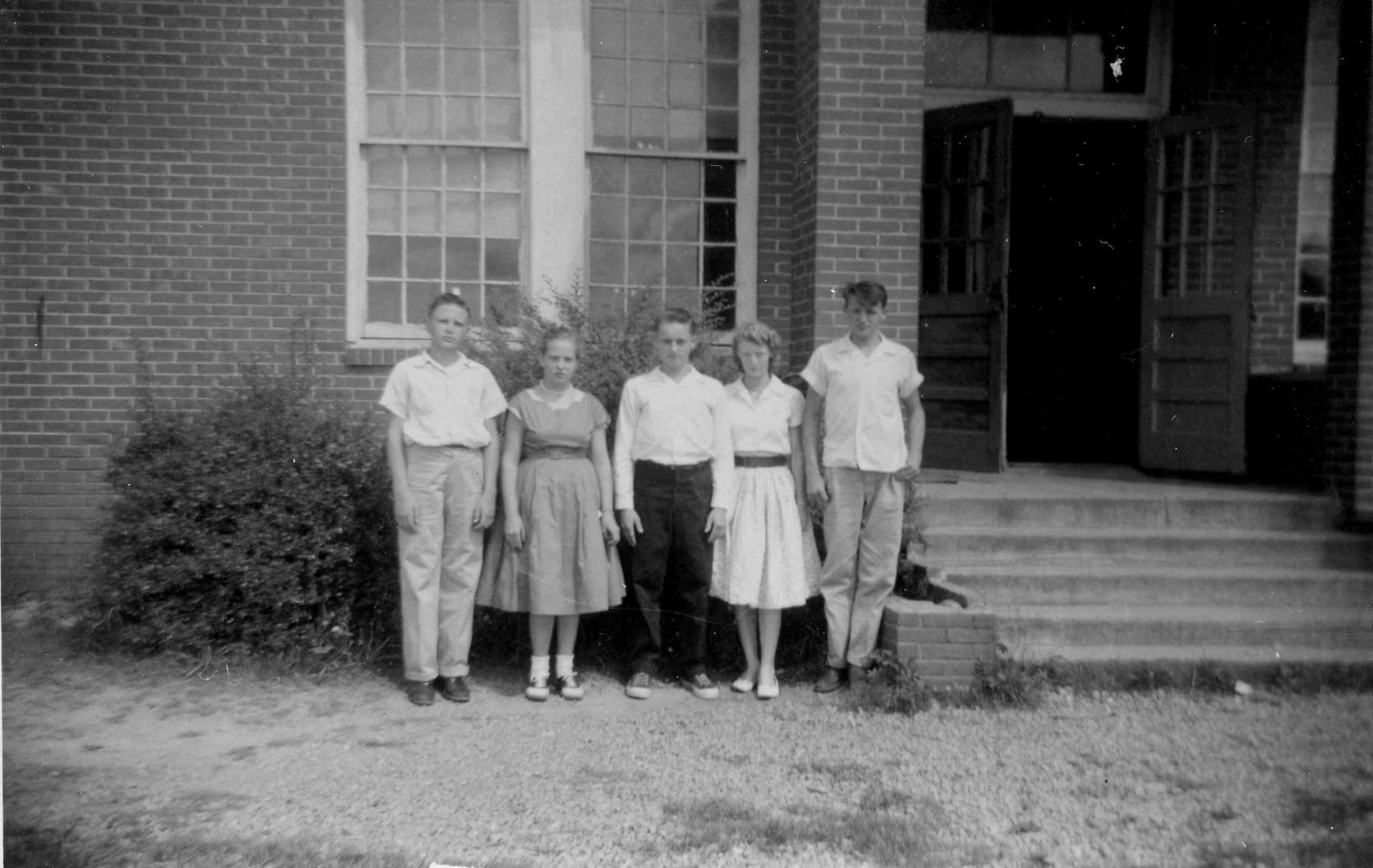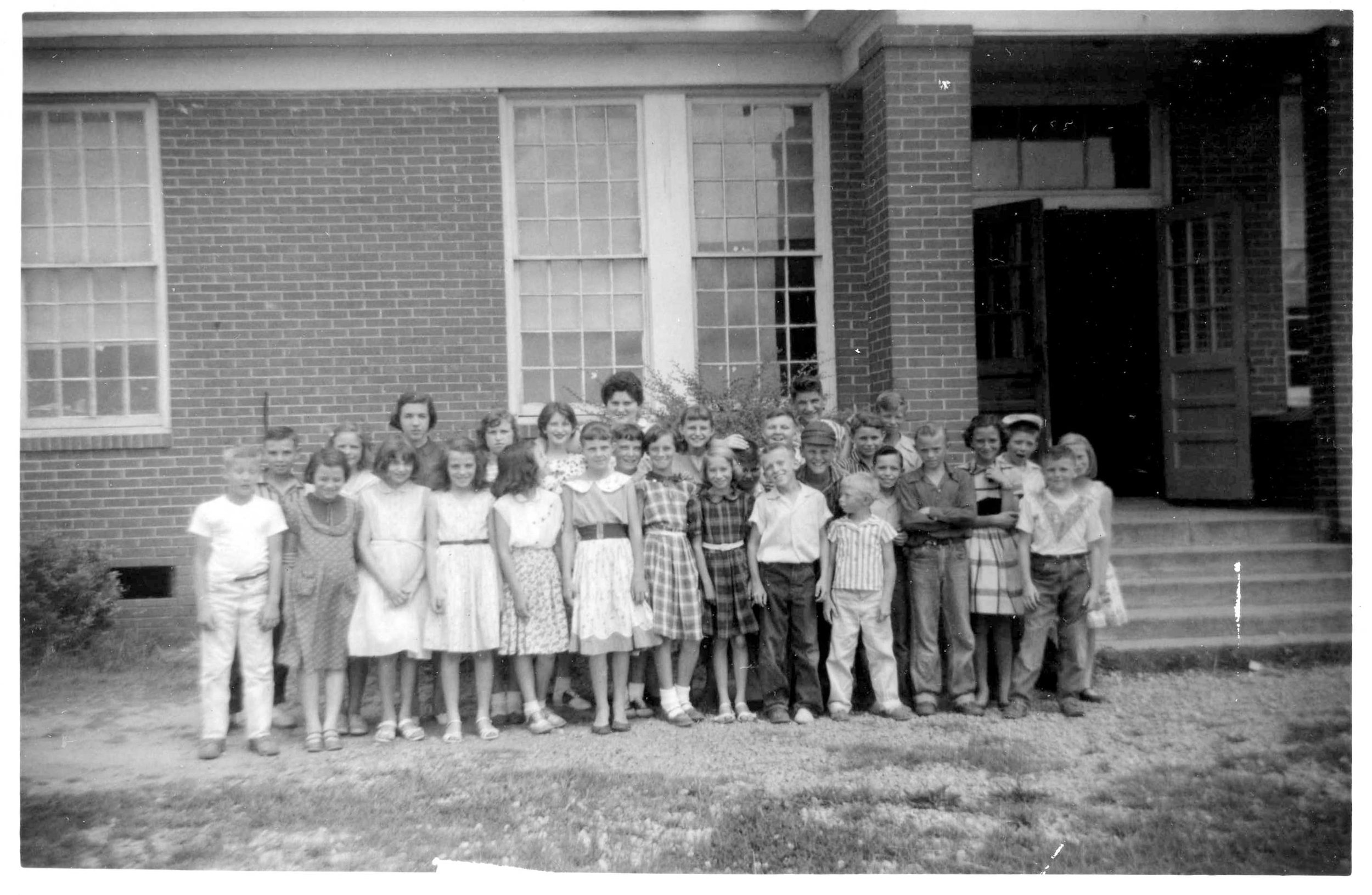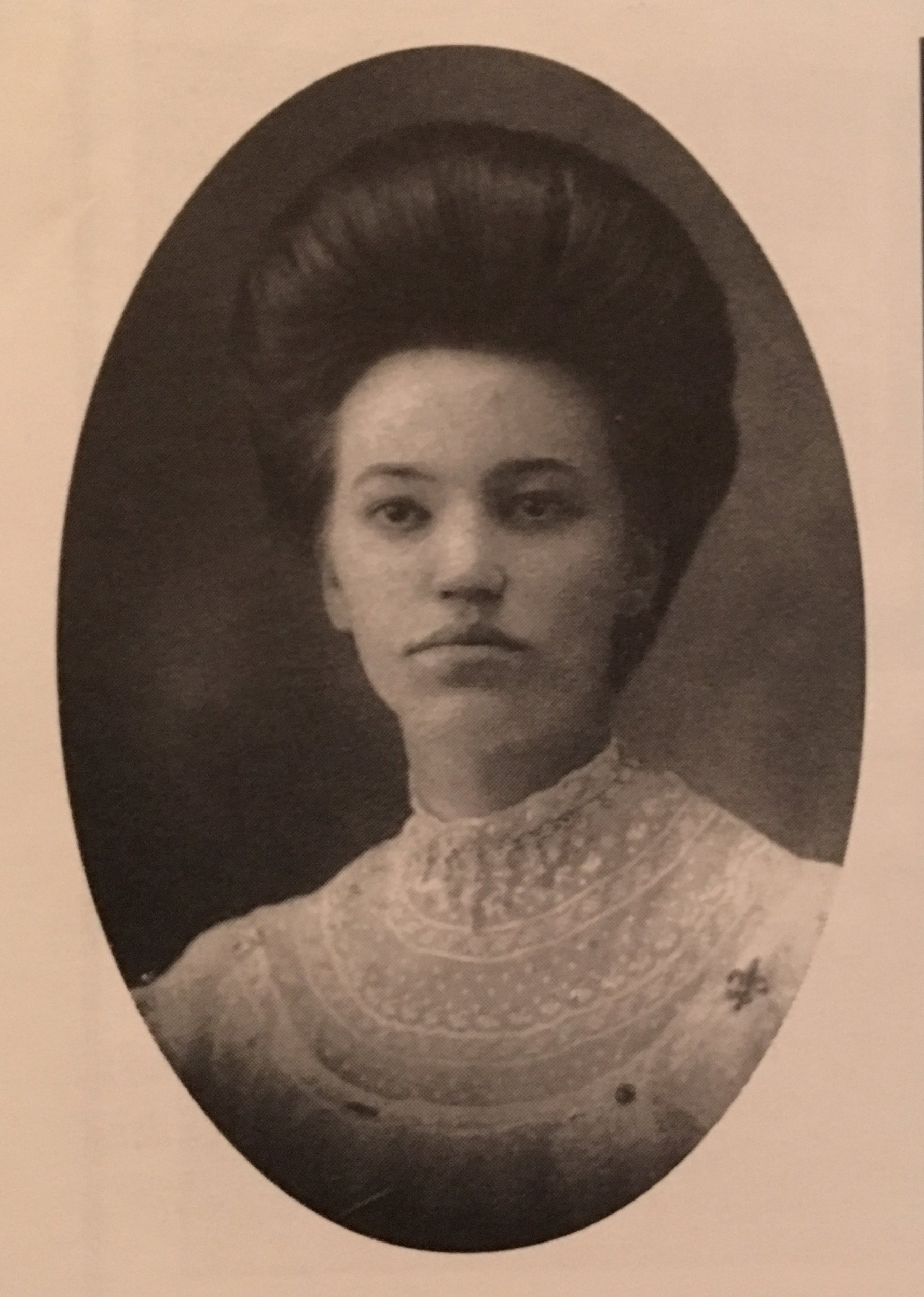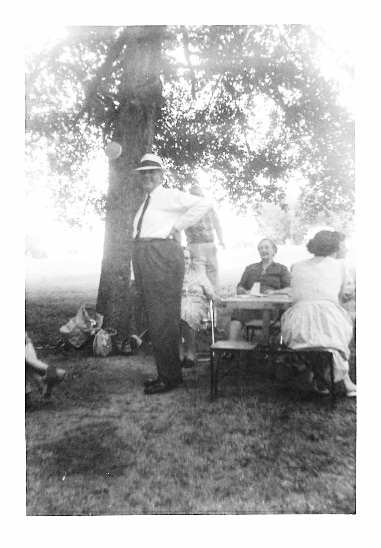History of Mt. Vernon
History of Mt. Vernon Christian Church
"According to the grace of God which is given unto me, as a wise master builder, I have laid the foundation, and another buildeth there-upon."
I Corinthians 3:10
The Beginning
During the 1830's preaching in Walton County, Georgia, had been done by a scholarly young minister, Rev. Philip F. Lamar. He had been educated by a generous Christian woman of Augusta, Miss Emily Tubman, at Bethany College, Bethany, West Virginia, a college established by the famous Alexander Campbell. In him, was manifested some of A. Campbell's characteristic zeal and noble purpose. Already, there were several families of religious influence in the Mountain District Community, so because of his persuasive power in the preached Word, they were convinced of the need of a church home. Consequent steps were so taken.
It is quite worthy of observation that worthwhile ambitions sometimes have very small beginnings. Such was true regarding the beginning of historic Mt. Vernon Christian Church. (The first records were recorded in ink made from ink ball of oak trees and quite legible after a hundred years.)
Preceding the first minutes of the church, we find this appropriate preamble: Georgia, Walton County, August 24, 1843.
We the Church of Christ at Mt. Vernon do agree to take the Scriptures for our only rule of Faith and Practice through life. Done by order of the Church.
A. W. WRIGHT, D. C. C.
The first house of worship was a small hewn-log house with mortised corners held in place by handmade wooden pegs. There was no fireplace or stove to provide heat. In that day, church attendance was prompted by a genuine desire to worship and to hear the Word of God preached. Note the type of seats used puncheons with two holes bored in each end for the legs, and there were no backs. There were no facilities for lights, so the congregation assembled for preaching both Saturday and Sunday mornings. Business was transacted after the Saturday sermon. This building was used as a schoolhouse also.
It was the custom of the times to build a home or church near a spring, so, on October 17, 1842, a friend of the church, J. W. Vinson, granted as a gift, two acres of land near the spring, which furnished continuously a generous supply of water. This grant provided for the privilege of public school purposes also. His daughter was granted the privilege of naming the church, so, she being impressed with the beauty of George Washington's home, named it Mt. Vernon.
About two years later, in 1844, this original house gave way to a small frame one, adjacent to the first one. It was placed at a north and south position, a door at each side, a door at the south end, and a high pulpit stand at the north end. It was unpainted, unceiled, without loft or heat, and was lit by candled sconces bracketed to the wall. In this building, wooden pegs were also used for heavy timbers, and the hand wrought nails were made by Robert McGaughey and Apple White Wright, members of the church. The boards for the roof were hand driven. In this, second church house, we find the plank seats were fitted at the top with a narrower plank used as a shoulder rest. The center aisle leading from the front door separated the males from the females.
Preaching in those days was more or less irregular, since Transylvania's College of the Bible seemed far away; so, preachers in Georgia were not plentiful. Along in the spring of 1873, John Tillman Hawkins, a young minister just graduated from this college, came as a state evangelist to Georgia. Upon his visit to Mt. Vernon, he found the high enclosed pulpit loft of Early English type entirely too stifling for summer revival services. So, to his own liking, with saw and hammer, which he secured from the hospitable, devout Aunt Jane McGaughey, he fashioned a very simple Bible stand. This alteration was especially pleasing to Bro. Billy Lowe, a visiting preacher of small stature, for he could scarcely see over the former high enclosure. This building, too, was used as a public school house.
Up to this time, burial rites were customarily performed at private burial grounds, but in 1875 Elder Thomas Mason Foster, a new pastor, lately from Transylvania, purchased a small plot of ground across the road for the interment of his young child and for further use as a public cemetery.
On September 20, 1879, this first frame house was sold for $20 to the trustees of Mt. Vernon Academy, exclusively for school purposes. This old house was rolled to the south, and in its stead was erected the third house of worship, another frame one, but the first one to be painted. This time its position was changed; now the entrance was toward the east, just as it is currently found today. There were two side entrances, and the two front entrances had aisles extending to the front. A wooden partition about three feet high extended from the rear down through the center of the building which divided the seating capacity of the males from the females. There were "Amen" seats on both sides of the pulpit. Now there were glass windows with green shutters. Lights were furnished by kerosene glass-chimney lamps placed on brackets against the wall. Heat was provided by a single wood stove on the men's side, where firing was easy, while the women on the opposite side kept warm as best they could. The pulpit stand was flanked on both sides by a tall pedestal, which held a pitcher of water and a lamp, respectively. The sacraments of the Lord's Supper were served from two plates and goblets provided by a faithful sister who had also furnished the bread and wine from her home. The offering was received by two deacons as they passed their hats. Baptismal rites were performed about half a mile away in a pool about eight by ten feet, built within a small stream, with wooden sides and wooden steps leading into the clear water. Against the wall on the platform of the pulpit was placed a dipper and bucket of sparkling water from the spring to quench the thirst of the children while they showed off their Sunday meeting clothes.
Figure 3 Third Church Building that lasted until 1905 before burning down after additions were added.
In 1890, much to the dismay and disgust of many of the senior members of the church, the first musical instrument, the organ, put in its appearance. It was placed in front of the pulpit loft behind the first pew, near the center of the congregation. This meant the removal of a section of the traditional center partition, which was the beginning of its disappearance.
On March 4, 1903, Mr. J. C. Phillips, a son-in-law of Mr. and Mrs. E. C. Wright, graciously donated to the church one and one-half acres of land adjoining the rear of the church property. This plot was to be called "The E. C. Wright Park," and to be beautified and used for the pleasure and benefit of both church and school. Accordingly, three-dozen water oak trees were planted. It is under these trees that tables are now set up for the sumptuous spreads of delicious food enjoyed at the annual "Homecoming" in August.
In 1905, the congregation outgrew the third house. Therefore, they decided to make repairs, and by adding an annex across the rear, doubling the seating capacity. This was hurriedly made ready for use for the annual July protracted revival meeting. But on July 10th, 1905, the night before the meeting was to begin, a calamity fell like a pall upon all the community the entire building and its furnishings, save the organ, were burned to the ground, with no insurance for reconstruction. Nevertheless, services for the next day were held under the trees, and plans were then made to rebuild the church. Subsequent services for the summer were held under a brush arbor, and by October 17, 1905 (exactly 63 years since the founding of the church) a new building was ready for use. This was a white frame one, forty by sixty feet, with seating capacity of three hundred. New features added were: a balcony, two heaters, cement pool at the spring (this replaced the wooden version and the foundation can still be seen to this day), pulpit set, carpet, and silver communion servers consisting of four chalices and four plates. Now the offering was received in small neat raffia baskets. This time we find one broad front door and a single center aisle, which banished forever the traditional center partition. The family could now sit together in church, and a young gentleman could at last dare to sit with his ladylove.
Figure 9 4th Church Building used for School Building - circa 1909
The fourth church was described in detail by Mary Ben Erwin, the grandchild of Erasmus Wright (member, elder and son of charter member Apple White Wright):
“It was of white boards with a steeple. The main door was at the end with two side doors near the front. I hope I never forget the interior when we entered. There was a center aisle with a row of hand-hewn benches on each side. Oil lamps hung on the walls and two pot-bellied stoves provided the heat. A live Christmas tree that touched the ceiling was centered in front of the altar. It was lighted with real candles and decorated with unwrapped presents tied on the tree. I have never seen one since that equaled it. At the top, was a beautiful white silk plush teddy bear. We had the Bible Christmas story with singing for which my cousin, Alevia Burson (Taught at the Mt. Vernon Academy), played the organ and Uncle John was the leader.” (Erwin)
Up to this time the church had been tidied by willing hands that lived nearby, just over the hill, but on July 14, 1906, at a business session, it was voted to employ a regular janitor. His duties were outlined as follows:
- Church and doorsteps to be swept once a week, and the stand, seats and organ well dusted.
- The church to be opened up in due time for all regular services, Sunday school, and all other services when notified by deacon.
- The window blinds to be opened and sash raised when necessary and window glass kept clean.
- The lamps to be cleaned and filled with oil and lighted in due time for all night services.
- The church buckets to be filled with fresh water for all preaching services.
- The churchyards to be swept once a month just before regular preaching day.
- The church must be closed and locked after each service and Sunday school, unless otherwise directed by the deacons.
- The song books to be kept in place upon the organ as much as possible.
- When wood is furnished by church, the housekeeper shall have it cut and make fire when cold enough.
In about 1908, congregational singing took on new life, for there was a piano in the new choir loft, and new songbooks. In about 1918, an acre of land adjoining the church property to the north was donated to the church by Mrs. D. W. Burson, grandchild of Apple White Wright. At the present time, the combined church and cemetery grounds consisted of eight acres.
In July 1922, the swinging kerosene lamps were displaced by Delco lights. This system also furnished water to the building. In 1937, electric lights and fans were made possible because of Rural Electrification by the Federal Government.
During the 1930's, as the centennial year was approaching, and the fourth house of worship was becoming impaired, the idea of a beautiful new brick edifice was born in the heart of J. E. Wright, an elder, and chairman of the board and grandson of Apple White Wright. Before this conception could become a reality, he had passed to the world beyond, and so the mantle of this undertaking fell upon the shoulders of his modest, faithful, affectionate wife. It is stated that the frame building had become top heavy and thus finally had to be torn down (Mathis, 1987). Throughout the weeks and months, she and the congregation reasoned, planned and envisioned what they could render unto the Lord. As in the days of Moses when the tabernacle was to be built, the Mt. Vernon congregation heard this same message: Exodus 35:4, 5, "This is the thing which the Lord commanded, saying, take ye from among you an offering unto the Lord: who so ever is of a willing heart let him bring it, an offering of the Lord. And they came, both men and women, as many as were willing hearted." So, in the year of our Lord 1940, this courageous woman, faithful to the vision of her devoted companion, led the membership in the erection of the fifth house of worship. The brick for the newest building was donated by Ms. Willie Wright, a faithful member and the wife of J.E. Wright whose vision helped in the fruition of the newest building (Mathis, 1987). Thus, there has been a new building for each generation.
Fifth and final Church structure
Albeit, the year of 1940 found the entire world within the throes of stress, distress, and burden bearing, such as only a world war could bring, the church at historic old Mt. Vernon was not to be daunted in its religious undertaking. They presented a living picture of tireless, cooperative laborers together with God. The men, women, and children have brought their labors of love. They worked on the cold, snowy days, and the rainy ones, from autumn through the spring. Everyone worked with a will, according to his own talent, whether it be stirring mortar, sawing boards, pulling nails, installing electricity, or serving hot lunches. These souls worked cheerfully and ceaselessly, and on July 13, 1941, the first service of worship was held in the new red brick church. The seating capacity of the main auditorium is 400. There is a Bible School room at each side of the entrance and one at the front.
Upon entering the building, one beholds in the worshipful setting the exquisiteness of the walnut furniture, the pews, Bible stand, communion table, two pulpit chairs, and two table chairs. These harmonize in simple Gothic style, lending dignity and a spiritual atmosphere to the church. Immediately behind the pulpit the baptistery has for its background an appropriate hand-painted mural suggestive of the Jordan River. The carpet and pulpit hangings are in blending shades of rich dark red. The piano and choir are at the left of the pulpit. New church hymnals have been provided. Modern electric lights are furnished throughout the building. There is a furnace and stoker, and air conditioning for both summer and winter. The ground floor runs the entire length of the building, and is being equipped with restrooms, modern kitchen and dining room, providing for the social needs of the church. The planting of appropriate shrubs adds beauty to the exterior. What a contrast between the first log house with its lack of comfort and the new solid brick one. This substantial building as dedicated unto the Lord on its centennial, is a loving gift to the community. May it be used with gratitude and gladness toward the building of His Kingdom.
To measure the spiritual development of this organization would be impossible, except by the vision of the All-Seeing Eye. For who can measure the limitation of a soul kindled by the flame of God's eternal love? Who can circumvent the benefits derived from a kind deed, an obedient heart, or a noble thought? Who can estimate the value of a human soul washed in the Blood of the Lamb and regenerated unto a more perfect work? Only "When the Roll Is Called Up Yonder," or the books opened up there, can an accounting be made? The spirituality of a church always has its roots deeply set in the abiding spirit of God. (Mrs. Mary Wright Burson, 1942)
"Except the Lord build the house, they labor in vain that build it."
Psalms 127: 1
Founding Members
"Now therefore ye are no more strangers and foreigners, but fellow citizens with the saints and the household of God. And are built upon the foundation of the apostles and prophets, Jesus Christ himself being the chief cornerstone, in whom all the building fitly framed together groweth unto a holy temple in the Lord. In whom ye also are builded together for a habitation of God through the Spirit." Ephesians 2: 19-22
The organization began with twenty-eight charter members, and these names were listed:
1. Robert Mayfield
2. James McGaughey
3. Robert McGaughey
4. Lucinda McGaughey
5. James McGaughey
6. Patsy Treadwell
7. Johnathan Nowell
8. Patsy Nowell
9. Apple White Wright, D.C.C.
10. Jonah Wright
11. James Doster
12. Sarah Adams
13. Rhoda Hamilton
14. Elizabeth Smith
15. John Glasson
16. Elizabeth Glasson
17. James Nowell
18. Elizabeth Nowell
19. Thomas J. McGaughey
20. Thomas N. Robertson
21. Mary McGaughey
22. Andrew J. McGaughey
23. Nancy Wilkins
24. Charity Stroud
25. Susanna Mayfield
26. Elizabeth Miller
27. Eliza Mayfield
28. N. Boyce
The first records show that the church was evangelistic at the outset. As the brotherhood grew in Georgia and America, Mt. Vernon’s field was extended to Georgia Missions, Foreign Missions, Educational Work, Church Extension, Ministerial Relief, and the various phases of Benevolence. Eventually these all merged into the United Christian Missionary Society. In 1890, the Christian Women’s Board of Missions was organized and the meetings were usually held on the Saturday before the preaching hour. It sponsored a group of Junior Builders. The Ladies Aid, organized in 1903, looked after such material needs as carpet, hymnbooks, communion service, etc. Under Duke Jones’s pastorate, these two women’s organizations merged into the Woman’s council. For the development of Christian character, and experience in the young life of the church, the Christian Endeavor Society served a vital purpose.
Sunday School
The Sunday school had its beginning in the very first framed, unpainted house and has been continuous almost to the present time. It has been a stimulant to the life of the church. Well is remembered the annual Christmas Tree it sponsored in the 1890’s the tree would bulge from the top to the bottom with everything from peppermint candy and red apples, to shiny lamps and coffee pots or even a new red velvet photograph album. Good old Santa came in his buggy and always stood near the tree until he had called the name of every person present and saw that they received his gift. Strangely, some bright boy would infrequently find in Santa’s voice a striking likeness to someone’s he had regularly heard at Sunday School. This tradition has faced the test of time and has continued into present day.
The Elmer Anthony/Post War Era to Present Day Mt. Vernon
In 1942, our country was at war with Germany and Japan. Although Mt. Vernon Church survived the Civil War, World War I and other conflicts, this one appeared worse. The whole world seemed battered. All the young men left their families to serve in a branch of the military service. Some of them were killed. The people here at home experience extreme stress and anxiety. Everyone’s life was changed dramatically. Rationing was imposed on the entire country. Food, shoes, gasoline and almost everything became quite scarce. The men and women left the farms to work in factories to help the war effort. Thus remaining to grow crops had to work harder than ever. People met at Mt. Vernon Church to pray for peace.
After suffering through the Great Depression and the war, they needed the strength only the Lord could give. At last, in 1945 peace came and life returned too normal. After the war, people were better off financially. Homes were built or remodeled. Bathrooms were added to existing house. This prosperity was shared with the church.
In 1946, Mrs. John “Willie” Wright bought the strip of land from the corner of Highway 78 and Mt. Vernon Road down to the creek and gave it to the church. Several years later, the church acquired the Mt. Vernon School property between John W. Breedlove Road and Mt. Vernon Road.
Mt. Vernon Academy Deed
Before Dr. E. N. Anthony retired, he suggested building a parsonage so future ministers would have a house near the church. The parsonage was built west of the church. It was constructed in 1958 at the cost of $9,000 and was built by Frank Baccus, Phillip Broach, Henry Cook, Noble Gasaway and many others. (Anthony) The cemetery was extended on the northwest side of the church. The men of the church put up permanent marble tables in the grove for homecoming and family reunions. The church basement was remodeled and is now called Anthony Hall. A glass door and wheel chair ramp were added. People gave generously and an elevator was installed to carry the handicapped and elderly up to the sanctuary.
Homecoming circa late 1950's
After church service circa 1960's
Preacher Anthony leading Sunday School during the early 1960's
Beautiful changes have been made in the sanctuary too. Drapery swags and mini blinds cover the windows. The pews have been padded and matching carpet laid. The choir loft was moved to the left front of the church and enclosed with walnut panels. Mrs. Jewel Anthony painted the backdrop for the baptistery. Light fixtures were added, including an antique altar lamp.
Anne Gunter Aycock
pictured outside of the newly renovated Church. She was the first to be baptized in the newly added baptismal pool in the sanctuary. Until this time baptisms were done in the concrete pool near the creek on church property.
Other heartfelt giving resulted in different Christian seasons, collection plates, and communion trays. Many of these memorial gifts are appropriately marked. A lighted steeple now serves as a beacon to all who pass by.
In 1990’s, the men of the church took it upon themselves to renovate Anthony Hall and remodeled the kitchen. This has been a great redesign and has been enjoyed by the many events held.
As the church has gotten older, many improvements have been made to modernize it for today’s use. With a great outpouring of love, new stained-glass windows can be seen throughout the church and at the partition of the baptismal pool. Many are dedicated to love ones of past and present. An electronic sign is now displayed to on comers of Highway 78. The fellowship hall has since been rededicated in memory of longtime member Frank Baccus and now is known as the Anthony-Baccus Fellowship Hall. The choir loft and stage has been remolded and now members can enjoy the choir from the front of the church.
Homecoming
Homecoming Day at Mt. Vernon has become an institution. It was begun about the year of 1926 to give an opportunity for former members and friends of the church to assemble and have fellowship, again remembering former experiences. The guests are always grateful for those who have kept the “Home Fires Burning” and made the day possible. They always enjoy the feast for them in the park. This event was instituted and presided over by Elder Joseph T. LaBoon, Chairman of the official board, until his death in 1932, when it was taken over by the succeeding chairman Elder John E. Wright. At his death in 1939 it was assumed by Elder Robert V. Johnston.
Today the grand tradition continues bringing back friends and family to this house of worship that has served the community for now 175 years. Brunswick stew and BBQ are prepared annually by the men of the Church for guests to enjoy. As in grand tradition, the food is bountiful, the fellowship is contagious and the spirit of the Lord is ever-present.
We are grateful and proud of the heritage of old Mt. Vernon Church. As we look to the future we pray that God will continue to bless it. If some of you young people present here today are around when the Bicentennial is observed, remember all of us who have gone. Know that we loved this House of Worship and keep it faithful to the glory of God until Jesus returns!
“Now my eyes will be open and my ears attentive to the prayer that is made in this place. For now I have chosen and consecrated this house that my name may be there forever. My eyes and my heart will be there for all time.”
2 Chronicles 7:15-16







